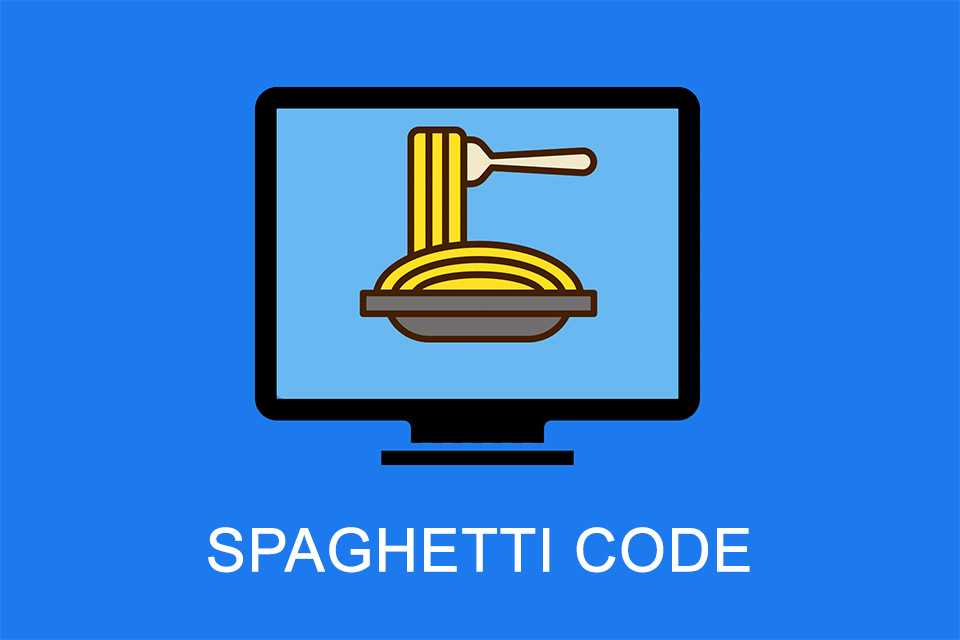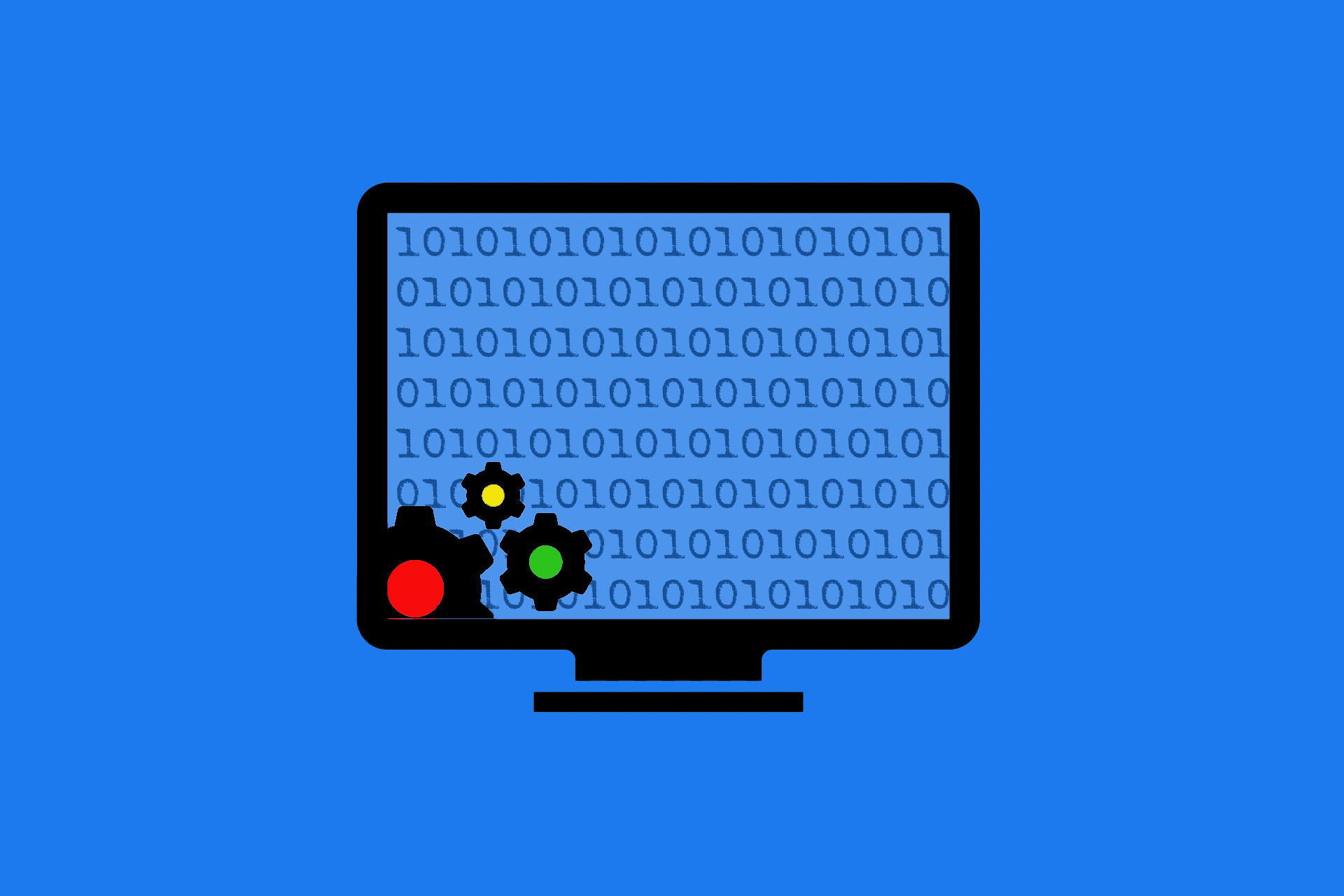What is Spaghetti Code?
Smartpedia: Spaghetti Code refers to poorly structured, overly complex and difficult to understand programming code that appears convoluted.
Spaghetti Code – poorly structured and only conditionally enjoyable
Designing code so that it is easy to read, change, extend and maintain is a central goal of clean-code software development. Spaghetti Code is exactly the opposite of this.
Spaghetti Code¹ is a derogatory term for programming code or parts of programming code that are
- poorly structured,
- overly complex, and
- difficult to understand, maintain and change.
It takes its name from spaghetti lying on a plate, looking tangled and confusing. Often Spaghetti Code is the result of
- programmers working in isolation or in a hurry,
- lack of object-oriented design technologies,
- lack of planning and foresight,
- insufficient knowledge and experience of programmers,
- lack of mentoring and
- ineffective code reviews.
Spaghetti Code example
Here is an example of Spaghetti Code in Java that calculates the factorial of a given number:
public class SpaghettiCode {
public static void main(String[] args) {
int num = 5, i = 1, result = 1;
while (i <= num) {
result = result * i;
i++;
}
System.out.println("Factorial of " + num + " is: " + result);
}
}
And here the same code is restructured to avoid Spaghetti Code:
public class CleanCode {
public static int factorial(int num) {
int result = 1;
for (int i = 1; i <= num; i++) {
result *= i;
}
return result;
}
public static void main(String[] args) {
int num = 5;
int result = factorial(num);
System.out.println("Factorial of " + num + " is: " + result);
}
}
Criticism of the term Spaghetti Code
Spaghetti Code as a term² is always criticised by programmers because it implies that the code is tangled and messy like a plate of spaghetti, but this does not address the real cause of the problem. The problem is not necessarily the appearance of the code, but a lack of modularity, poor design or possibly inadequate testing that makes both maintenance and customisation difficult.
Furthermore, the term is perceived as overly harsh and unprofessional, implying that the programmer who wrote the code is incompetent, when in reality he may have been pressed for time, had to work with outdated technologies or simply lacked experience.
In addition, some software developers find the term misleading because it can be difficult to determine what Spaghetti Code is. Programmers can have different opinions about what makes good code and what is Spaghetti Code. What is clean, well-organised code to one person may be a mess to another.
For these reasons, many developers prefer to use more neutral terms like “unstructured code” or “poorly designed code” when referring to code that is difficult to maintain and change.
Disadvantages of Spaghetti Code
Disadvantages of Spaghetti Code include the following:
- It is often overly complex, making it difficult to understand the logic of a programme. This complexity makes it difficult to maintain and change the code. It also often makes the process of debugging more time-consuming, as it is difficult to track down the source of a problem.
- Redundant or unnecessary code can contribute to increased memory consumption while decreasing performance.
- It is often difficult to scale and extend, especially if it is not structured in a modular way and adding new features makes the code more and more complex. It is therefore better not to consider reusing the code.
- It is prone to errors and not very reliable. For example, the longer a method is, the more error-prone it is. It is also difficult to ensure that the code works correctly.
In short, companies would do well to avoid such code. Instead, they should aim to develop clean code.
Approaches to avoid Spaghetti Code
Below are some approaches that can help avoid Spaghetti Code:
- Breaking code into smaller, modular pieces can help avoid bad code and make it easier to understand, test and change.
- Regular code reviews can help identify areas of code that are overly complex or difficult to maintain, and provide opportunities to restructure or improve the code.
- Adding descriptive comments to the code can help explain the logic and make it easier to understand.
- Thorough testing can help recognise and fix bugs early to prevent bad code from becoming even more complex and difficult to maintain.
- Establishing coding standards and conventions can ensure that code is written in a consistent way, making it easier to understand and maintain.
Using design patterns can help structure the code and make it easier to maintain. - Regularly refactoring code to improve its structure, readability and maintainability can prevent Spaghetti Code from becoming more complex over time.
- The McCabe metric can be helpful in identifying complex and potentially error-prone areas of code that are at risk of becoming spaghetti code.³
- Regularly assessing code quality and continuously improving development processes can help prevent Spaghetti Code from being written in the first place.
By following these good practices, developers can write clean, maintainable code that is easy to understand, change and extend, reducing the risk of Spaghetti Code.
Impulse to discuss
When is it worth eliminating Spaghetti Code, and when does it make more sense to implement corresponding parts of a programming entirely from scratch?
[1] In some publications, Spaghetti Code is also described as anti-pattern.
[2] The origin of the term is unclear, and it is not known who first coined it. The term has been used in the software development industry for several decades and was probably created by a programmer or group of programmers who were frustrated by trying to maintain and change overly complex and difficult-to-understand code.
[3] The McCabe metric, also known as the McCabe complexity metric, is a measure of the so-called cyclomatic complexity of a program. Since it is possible to have well-structured, maintainable code with a high McCabe metric, and Spaghetti Code with a low McCabe metric, it is advisable to use the McCabe metric as one part of a broader code quality assessment along with other metrics such as code readability, test coverage and maintainability, and manual code reviews.
Here you can find a video about What is “Spaghetti” Code?
If you like the article or would like to discuss it, please feel free to share it in your network. And if you have any comments, please do not hesitate to send us a message.
And here you will find additional information from our t2informatik Blog:



